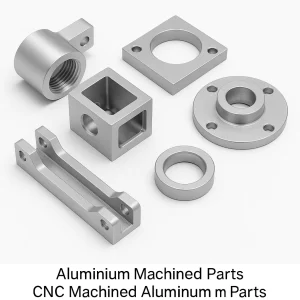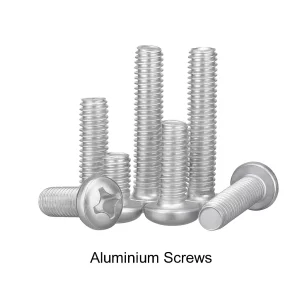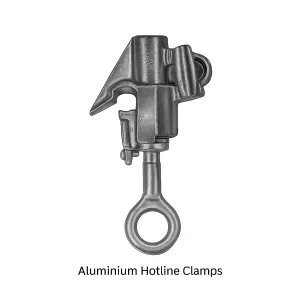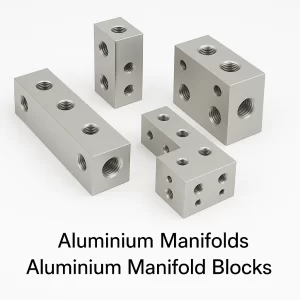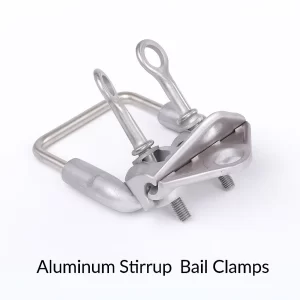High-Conductivity Aluminium Stud-Mount Transformer Connectors for Power Distribution Systems
We are one of the leading manufacturers and exporters of precision-engineered Aluminium Stud-Mount Transformer Connectors from India. We have been supplying critical and reliable power distribution connection solutions to the global market for over three decades. Our connectors are specifically designed to create a secure, low-resistance, and durable interface between transformer bushings, distribution cables, and other electrical apparatus. Engineered from high-conductivity aluminum alloys and finished with superior platings, these components are built to withstand thermal cycling, mechanical stress, and environmental exposure, ensuring the integrity of medium and high-voltage electrical systems. Our in-house engineering capability allows us to provide custom-designed electrical connectors that meet the exact specifications of transformer OEMs and utility companies worldwide, supported by rigorous testing and traceability.
Comprehensive Technical Overview of Stud-Mount Transformer Connectors
The Aluminium Stud-Mount Transformer Connector is a specialized component designed to terminate electrical conductors directly onto the studs of transformers, capacitors, and other equipment in substations and switchgear. Its primary function is to ensure a permanent, high-integrity electrical connection that minimizes resistance, prevents hot spots, and maintains stability under fault current conditions. These connectors typically feature a stud-bore hole for mounting onto an equipment stud, one or more conductor bores for accepting cables, and a set of fastening holes for securing the connection with bolts. The use of high-purity Electrical Grade Aluminium ensures optimal current-carrying capacity and excellent corrosion resistance. For connecting dissimilar metals, such as aluminum to copper equipment studs, we offer advanced bimetallic transition connectors to prevent galvanic corrosion, a critical consideration for long-term reliability in outdoor power distribution networks.
Material Grades and International Standards
We manufacture our connectors using certified materials that comply with global electrical and mechanical standards.
| Material Component | Available Grades & Standards |
|---|---|
| Connector Body | Aluminium 1350-H14 (ASTM B230/B231, IEC 60228), Aluminium 6061-T6 (ASTM B221, ANSI C119.4), Aluminium 1100 (ASTM B211) |
| Hardware (Bolts, Nuts) | Stainless Steel 304/316 (ASTM A276), Hot-Dip Galvanized Steel (ASTM A153), Silicon Bronze (ASTM B98) |
| Bimetallic Interface | Aluminium to Copper Bimetal per ASTM B101, Silver-plated transition surface |
Advanced Manufacturing Processes and Quality Assurance
The production of our high-current aluminium connectors involves a multi-stage process to ensure dimensional accuracy and electrical performance. The connector body is typically forged or extruded from aluminum billets using high-tonnage hydraulic presses to achieve a dense, non-porous grain structure that enhances mechanical strength and electrical conductivity. Precision machining of the stud bore, conductor bores, and tap holes is performed on CNC machining centers to maintain tight tolerances and perfect alignment. For bimetallic transformer connectors, we employ a high-pressure, high-temperature explosion-welding or friction-welding process to create a metallurgical bond between the aluminum and copper layers. Every production batch undergoes a stringent quality control process, including dimensional checks, conductivity tests per ASTM B193, and destructive testing on sample lots to validate mechanical properties.
Typical Applications and Industries Served
Our transformer bushing connectors are critical components in a wide array of electrical power applications:
-
Power and Distribution Transformers: For connecting LV and HV bushings to incoming and outgoing cables.
-
Switchgear and Circuit Breakers: As connection points for busbars and cables within the assembly.
-
Capacitor Banks and Reactors: For providing robust connections in power factor correction and filtering equipment.
-
Renewable Energy Substations: In solar and wind farm substations for connecting collector system feeders to step-up transformers.
-
Railway Traction Power Systems: Used in traction substations for connecting overhead line equipment to transformers.
Dimensional Data and Technical Specifications
We offer a vast range of standard and custom sizes to accommodate various transformer stud and cable sizes. The table below provides a general overview of our standard product range.
(Insert Infographic Image Here: A detailed cross-sectional diagram of a typical dual-bore stud-mount connector, labeling the stud bore, conductor bores, bolt holes, and key dimensions like A, B, C, and D.)
Standard Size Chart for Aluminium Stud-Mount Transformer Connectors
| Transformer Stud Size (inch) | Conductor Bore Range (AWG/kcmil) | Stud Bore Diameter (inch) | Bolt Hole Size | Typical Current Rating (Amps) |
|---|---|---|---|---|
| 1/2″ – 5/8″ | #2 – 250 kcmil | 0.51 – 0.64 | 1/2″ | 200 – 300 |
| 5/8″ – 1″ | 250 – 500 kcmil | 0.64 – 1.02 | 5/8″ | 300 – 500 |
| 1″ – 1 1/2″ | 500 – 1000 kcmil | 1.02 – 1.52 | 3/4″ | 500 – 800 |
| 1 1/2″ – 2″ | 1000 – 1500 kcmil | 1.52 – 2.03 | 1″ | 800 – 1200 |
Note: This is a representative chart. Custom configurations for specific stud sizes, multiple conductor bores, and unique bolt patterns are our specialty.
Surface Finishing and Electro-Mechanical Properties
The correct surface finish is critical for maintaining a low-resistance connection and preventing oxidation.
-
Tin Plating: The industry-standard finish, providing excellent corrosion resistance, low contact resistance, and prevention of aluminum oxide formation. Compliant with ASTM B545.
-
Silver Plating: Used for higher-temperature applications or as the contact surface on bimetallic lugs, offering superior conductivity and oxidation resistance at elevated temperatures.
-
Anodizing: Typically used for non-contact surfaces or in specific environmental conditions for enhanced corrosion protection, though it is non-conductive.
-
Bimetallic Transition: A aluminum-copper bimetallic connector features an aluminum body for cable attachment and a copper pad or sleeve for connection to copper equipment studs, effectively mitigating galvanic corrosion issues.
Precision Tolerances and Production Lead Time
Standard dimensional tolerances for bore sizes and center-to-center distances are held to ±0.005 inches (±0.13 mm) or as specified per ANSI C119.4. Our standard production turnaround time is 4 to 6 weeks from the finalization of all technical details. We maintain flexibility in our production schedule to accommodate urgent project timelines and large-volume orders.
Why Choose Jamnagar Brass Components for Electrical Connectors?
Partnering with us for your transformer connection components provides significant strategic advantages to your supply chain and product quality.
-
Decades of Specialized Experience: Our 30-year focus on electrical components has given us deep expertise in the nuances of materials, standards like ANSI C119.4, and application challenges.
-
Unrivaled Customization and DFM Support: Our core competency is the ability to customize. Our engineering team excels at reviewing technical drawings to suggest changes for manufacturability, often reducing cost and improving performance without compromising electrical integrity.
-
Proven Supply Chain Agility: We are recognized for our flexibility in production time and ability to manage complex, large-scale export orders with consistent quality.
-
Direct Technical Communication: We provide good communication skills and direct access to our engineering team, ensuring all technical and commercial queries are addressed promptly and effectively.
-
Global Export and Packaging Expertise: We offer customized packaging with customer labels and logos, ensuring products are easily identifiable and arrive in perfect condition, anywhere in the world.
Packaging and Shipping
Our connectors are carefully packaged to prevent damage and oxidation during transit. They are often individually bagged, placed in partitioned cartons, and secured on pallets. We fully support customized packaging with customer labels/logo to facilitate your inventory management and branding requirements.
Frequently Asked Questions (FAQ)
Q1: Why is tin plating necessary on aluminum transformer connectors?
Tin plating is essential because it prevents the formation of a non-conductive aluminum oxide layer on the contact surface, ensuring a stable, low-resistance electrical connection over the lifespan of the installation.
Q2: When should a bimetallic connector be specified?
A bimetallic connector is critical when connecting an aluminum conductor to a copper equipment stud. It prevents galvanic corrosion, which can occur when two dissimilar metals are in contact in the presence of an electrolyte, ensuring a reliable and long-lasting connection.
Q3: Can you manufacture connectors for specific ANSI or IEC standard transformer bushings?
Yes, we regularly manufacture custom-designed electrical connectors to match the exact stud size, pitch circle diameter (PCD), and configuration of transformer bushings per ANSI C119.4, IEC 61238, or other customer-specific standards.
Q4: What quality documentation do you provide?
We provide Material Test Certificates (MTC) for all raw materials. We can also supply First Article Inspection Reports (FAIR) and certificates of compliance stating conformity to specified standards.
Q5: What is your typical lead time for a custom-designed connector?
Our standard lead time for production for a new custom design is 4 to 6 weeks, which includes finalizing drawings, sourcing materials, production, and testing. We offer flexibility for rush projects upon request.
Glossary of Technical Terms
-
Stud-Mount Connector: An electrical fitting designed to be mounted directly onto a threaded stud of electrical equipment like a transformer.
-
Bimetallic Connector: A connector composed of two different metals (e.g., aluminum and copper) metallurgically bonded together to transition between dissimilar conductor materials.
-
kcmil (kilo-circular mil): A unit of cross-sectional area used for large electrical conductors, primarily in North America.
-
Tin Plating: The process of depositing a thin layer of tin onto a metal surface to improve corrosion resistance and solderability.
-
ANSI C119.4: An American National Standard that covers electrical connector test methods and performance for connectors used in overhead and underground applications.
Request a Quote for Your Transformer Connection Needs
Send us your technical drawings or specifications for a comprehensive quotation and engineering review. Leverage our three decades of manufacturing excellence for your critical power components.
Jamnagar Brass Components
Office Address: 1406, 14th Floor, Dalamal Tower, Nariman Point, Mumbai – 400021, Maharashtra, INDIA
Factory Address: Plot 10B, GIDC Industrial Estate, Shanker Tekari, Udyognagar, Jamnagar, Gujarat, India – 361004
Phone: +91-22-43449300 / +91-22-43449323
Email: sales@jambrass.com
Contact Person: Mr. Mehul Vora


